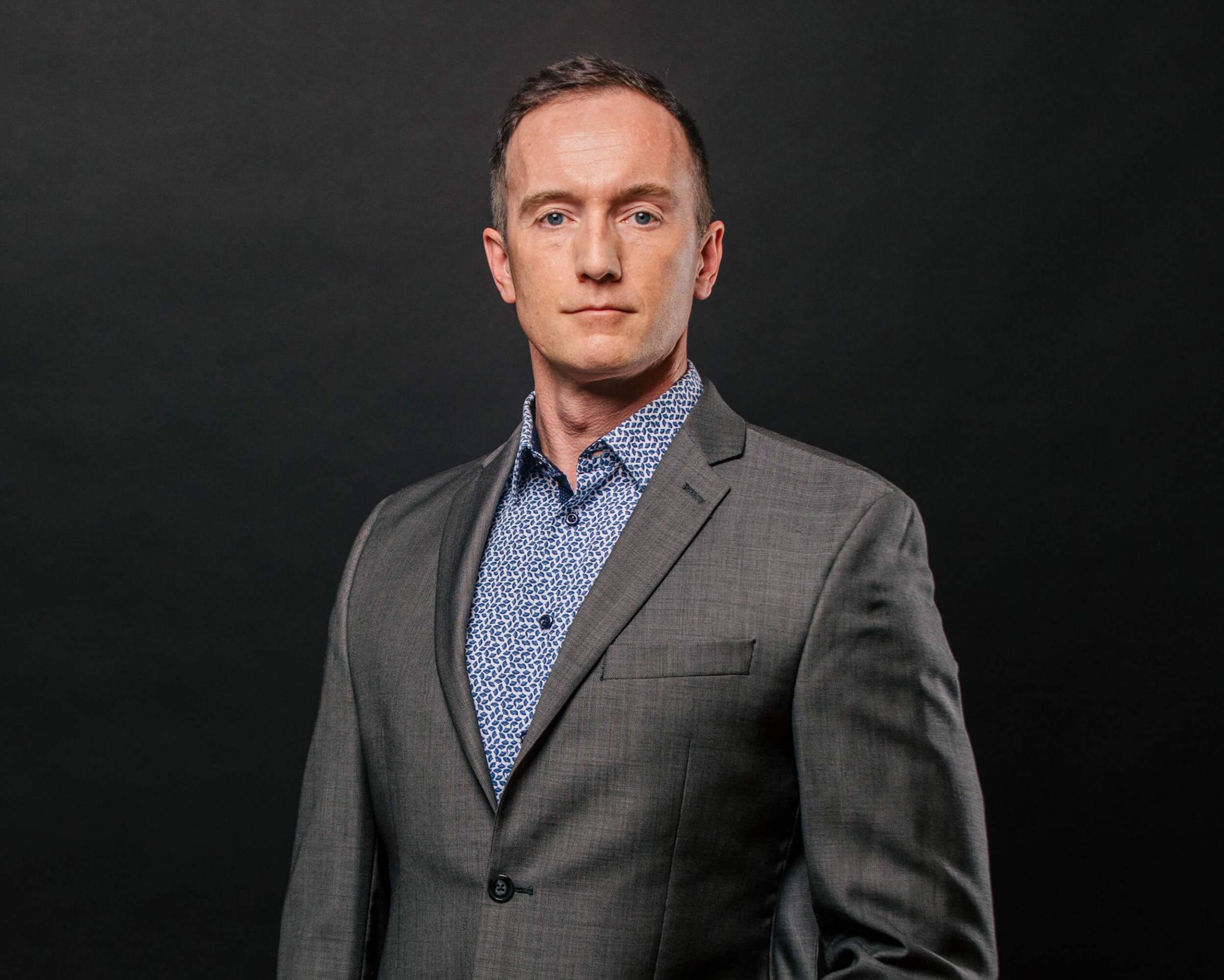
Analytical chemist explores contaminant impacts on water and soil quality
Dr. Alistair Brown joined the Department of Soil Science as Manitoba Analytical Solutions (MASS) Lab Director and Assistant Professor, on October 1, 2024. His interest in analytical chemistry was sparked during his undergraduate studies when a course on ecotoxicology shifted his career focus. Today, Alistair explores the fate and toxicity of environmental contaminants in soils and water, including UV filters, pesticides, and perfluorinated compounds.
Tell us about yourself
I’ve been with my wife Kendra for 23 years, and I have two sons, Asher and Jude, who are 16 and 13 respectively, and our dog Ollie who turns two tomorrow. I am a mass spectrometry method validation specialist. I got my BSc (Biochemistry) from the University of Winnipeg in 2013, and PhD (Chemistry) from the University of Manitoba in 2019. In my post-doc, I developed analytical methods for federal compliance under the Cannabis Act (2018), after which time I worked with Environment and Climate Change Canada studying the impact of different retention structures on nutrient loading into the Red River Basin. During the pandemic, I made several courses for the Department of Environment and Geography, after which I was solicited to create the Faculty of Agricultural and Food Sciences’ Manitoba Analytical Solutions (MASS) Lab in the Richardson Centre for Food Technology and Research. Now I have made numerous additional methods for several faculties, in addition to Health Canada.
Why did you get into this area of study?
I used to want to be an orthopedic surgeon, then a cancer researcher in my early 20s. Then during my undergrad, I took ecotoxicology with the Canada Research Chair Dr. Charles Wong at the University of Winnipeg. That completely opened my eyes to how humans and other organisms are exposed to environmental contaminants, whether water, food, air, or soil. The entire field of epigenetics fascinates me – how toxicants can alter gene expression in addition to their baseline toxicity. This led me to become an analytical chemist who specialized in water, whether surface water, wastewater, groundwater, or drinking water. Water security is critical to not only the health of the environment and agriculture but also vulnerable peoples such as our Indigenous communities. From that point on I have expanded to many different matrices.
One of the most nuanced aspects of environmental chemistry is contaminant fate, sorption, and transport via solids, soils, and sediments. Just because something is not found in the water doesn’t mean it is not in the environment. Conversely, just because something is found in the environment doesn’t necessarily mean it is a threat to aquatic biota. It is all about your perspective, values, and understanding of risk calculations.
What are you seeking to explore with your research?
The main objectives are ultraviolet filters (e.g. sunscreens), pesticides and their transformation products, and perfluorinated compounds in the environment. There is essentially no freshwater data on UV filters in Canada including environmental fate and toxicity, so we don’t know how dangerous they are and they are used everywhere at high levels. Also, we will be quantifying pesticide transformation into different environmental forms to get a better picture of the true inventory that can impact human and biotic health. The biobed at the Ian N. Morrison Farm will degrade pesticides during remediation, so determining the extent will also be critical to estimating environmental loads. Lastly, I will build upon my perfluorinated compound research experience and explore leaching into Canadian soils via buried textiles.
Will you be teaching?
I currently teach Introduction to Environment and Health, and Advanced Issues in Environment and Health. I will be looking to teach the Soil Science pesticides course this winter; and I would love to develop a senior level/ graduate applied mass spectrometry interdisciplinary course relating to agriculture, engineering, food, and environment.
I fundamentally believe teaching is the cornerstone of higher education, not it being a business. The most effective teacher is knowledgeable, translatable, and approachable. This means you have to know what you’re talking about, translate it in different ways to different students, and create a culture of safety where students feel comfortable to talking to you. Shout out to CATL for helping train faculty to achieve this!
Any interesting stories you’d like to share about your field of study?
The hallmark feature of me as a professor is how I got here. After stopping halfway through my BSc at UW in 2000, I became a carpenter and then fuel trucker for Petro Canada for 13 years. Along the way I got married, bought a house, and had two sons. I went to grad school when they were one and four years old, so I sort of did everything backwards. I am a fan of growing good people, not just cranking out publications – focusing on execution, not results.
Second, as I stay rooted in Manitoba I realize that there is a significant knowledge gap in my field of applied mass spectrometry. It is much more common in more biotech centered areas such as California, the Eastern seaboard, and the GTA, but Manitoba has the opportunity to become a great hub for forensic mass spectrometry and environmental contaminant analytical chemistry. This is especially true when committing to the principles of Anishinaabe Nibi Inaakonigewin (water law) and reconciliation with our Indigenous communities.
What you like to do in your spare time?
I am a restless soul who never stops. I love to coach Kids of Mud mountain biking with Woodcock Cycle for the past seven years. I have coached hockey in St. Boniface for years, I volunteer with several scientific societies and their conferences, and I serve my political party at provincial and federal levels. I travel around North America mountain biking, and I serve on local trails organizations to grow our infrastructure and community in Manitoba when I am not fixing or custom-building bikes for others. I have also rekindled my love for the gym in the past five years. I go three to four days per week. Whether it was trucking or now in the office or lab, this life will break you if you don’t fight back.






